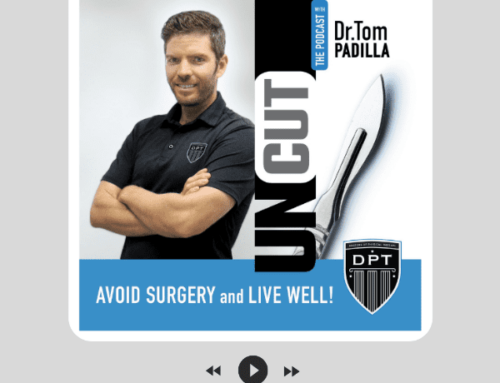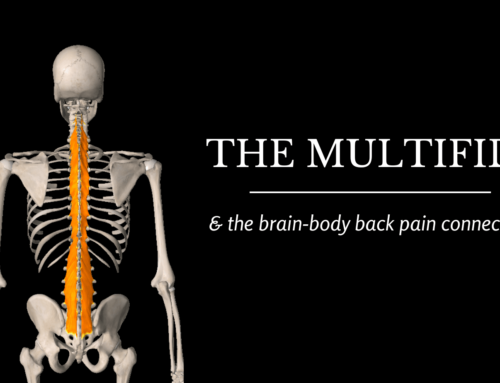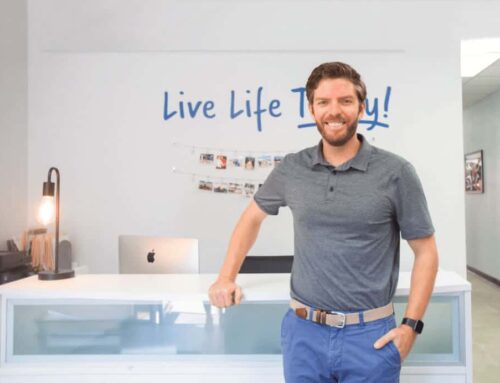Recently I was explaining something to a patient in the clinic, when he stopped me and said “You’re such a nerd!” followed by “I love it.” I definitely agree with his assessment. I’m obsessed with understanding the WHY behind everything we do in the clinic. Today I’m going to help you understand these new technologies, and how they could benefit you or someone you know.
I think it’s important to note that I treated our new technologies with a very heavy dose of skepticism. I’m very aware of the fact that the physical therapy industry has used modalities as a way to waste time and increase revenue. For example, when Ultrasound was reimbursed $80 per unit, everyone was getting ultrasound. When insurance reimbursed $8 for putting people on hotpacks or ice, everyone got hotpacks and Ice…Now that PT’s are overloaded with patients in typical settings, they’ll often resort to these “time-wasters” so that they can document their sessions and not stay 2 hours late every day charting notes. The LAST thing I was going to do was bring something into the clinic that has no scientific merit. So I was thrilled when I heard that the Institute for Tissue Regeneration and Repair conference was going to be right in downtown Phoenix.
I went to the conference along with a bunch of other nerds, to learn about the new technologies available in orthopedic care, specifically in the field of tissue repair and regeneration. One of the first things that stood out to me, was that the majority of the presenters were orthopedic surgeons, and podiatrists. People who made a living doing surgeries, now saying that they use these technologies FIRST, and do surgery as a last resort. They even use these technologies to improve their surgical outcomes, and outcomes from other regenerative treatments.
One of the most notable presenters was Dr. Ludger Gerdesmeyer. He’s an orthopedic surgeon who has performed over 5,000 total knee replacements, 5,000 total hips, 1,000 spinal surgeries, published 100 papers, 15 RCT’s, and 2 FDA trials, also while being a professor at the University of Kiel in the department of orthopedic surgery and traumatology. He too was skeptical when he first heard of these technologies, and after doing extensive clinical and academic research, is decidedly for the use of these before he does surgery. Between him and the other presenters all presenting cases with before/after MRI’s, and X-rays, they showed some really fascinating things. The biggest takeaway was that these technologies stimulate the bodies’ own natural healing capabilities, allowing people to avoid surgery, and relying on medications, giving them a better way to live a healthier life. Here’s how they work.
EMTT is a long-play to help with inflammation, pain, and stiffness. It can take up to 3 months to fully work, and most studies show it is effective with just 8 treatments. Some people with acute pain, experience relief in the first couple treatments, while chronic conditions take longer. Here’s how it works: by the time we start experiencing pain from degenerative conditions like plantar fasciitis, or rotator cuff tears, inflammation has been building up for a long time. The body is able to keep up at first, but slowly additional inflammation builds up like a crowd of people trying to get through a small turn-style gate. Once the crowd is big enough, we experience pain. The body can no longer keep up because the gate is too small and slow for the crowd, and people have to go one at a time. When you introduce EMTT to the area, it opens the ion channels, meaning it makes the gate wider, and holds the gate open, allowing all the people through quickly. In this example, the crowd was inflammation. Once the crowd is cleared, the gate is able to function again normally, so it “resets” the environment to allow healing to take place.
EPAT (aka ‘shockwave’) can produce quick relief, as well as stimulate healing processes to start taking place, that will continue for up to 90 days after treatment. Its effects on healing tissue are amplified and combined with EMTT. Shockwave was originally developed to break up kidney stones without cutting into someone. The soundwaves produced are strong enough to penetrate through the body and shatter the stones. When we use it in our handheld device in clinic, the sound waves are used to break up scar tissue in tendons, stimulate bone healing, decrease inflammation, and the “damage” caused by the shockwaves causes the brain to send growth factors and regenerative cells to the tissue to cause a rapid healing response.
When you combine EMTT with EPAT, the gates are open when the growth factors arrive, and there’s no crowd so they are allowed to walk right in and start the healing process. Both are amazing technologies that can be used separately for great results. All of the orthopedic surgeons presenting their cases, made it a point to say that they’re better together.
The biggest ‘aha’ moment for me over that weekend, was that these surgeons are getting good results with the technologies, and they’re only focusing on healing the tissue. They admitted that two things need to happen for best outcomes. You have to heal the tissue, AND solve the reason it’s becoming damaged in the first place. In the clinic we call the tissue the “What diagnosis” (what hurts), and the ROOT CAUSE is the “Why diagnosis” (why does it hurt?). When you fix BOTH, in my mind we’re getting close to a “good as new” type scenario.
I hope this was helpful in better understanding what we’re offering in our physical therapy clinic in Scottsdale. I’m excited to have these to be able to offer to you as an option. Please don’t hesitate to reach out and inquire if you’re wondering if they would be helpful for something you or someone you know has going on.





